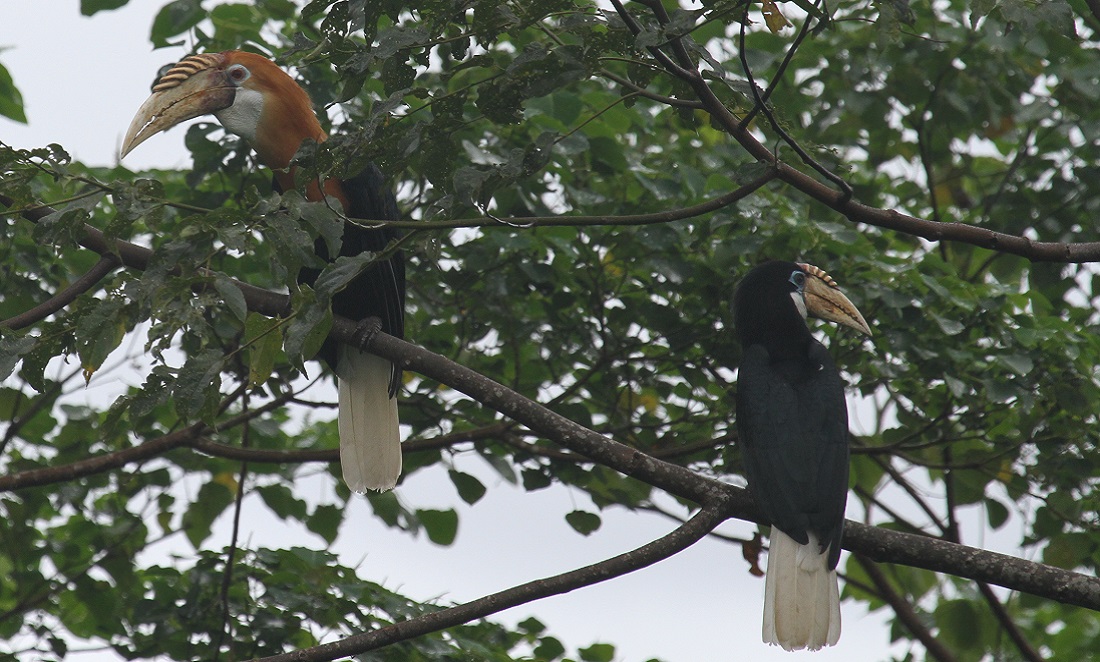Dense tropical rainforest covers 70% of the Papua New Guinean island, which is known for its hostile terrain, high temperatures and stifling humidity.
“Coupled with that, we were actually there in the wet season,” Rob says.
“It rained for the first 2 weeks we were there. It started flooding, and we had large trees fall down because of the rain.”
One of the researchers contracted malaria, and the team encountered machete-wielding locals as they navigated the thick forest.
A UNIQUE REGION
Rob says that, while the expedition wasn’t easy, it was certainly rewarding.
The team logged more than 400 hours of surveys on New Britain, which is famous for its rich birdlife.
There are 14 bird species that live only on the island, and a further 38 birds are restricted to New Britain, nearby New Ireland and a few small satellite islands.
But the region’s fauna is under threat.
Recent decades have seen catastrophic clearing of the forest for palm oil plantations as well as illegal logging.
THE GOOD, THE BAD AND THE UGLY
Despite the threats, very little is known about New Britain’s unique birdlife.
Rob says the expedition set out to understand how the birds had coped with the clearing and assess their conservation status for the IUCN Red List of Threatened Species.
The research, published in July, is the most comprehensive dataset ever assembled on birds in New Britain.
“We thought there would be a lot of doom and gloom, but in fact there was only a single species that we said should be rated as faring worse than it currently was,” Rob says.
“That was the New Britain kingfisher.”
The work recommended increasing population estimates for seven birds—the pied cuckoo-dove, yellowish imperial pigeon, green-fronted hanging parrot, blue-eyed cockatoo, violaceous coucal, New Britain boobook and New Britain thrush.
However, despite comprehensive surveys, four birds remain very rarely recorded—the slaty-backed goshawk, New Britain sparrowhawk, New Britain bronzewing and golden masked-owl.

PALM OIL PREDICAMENT
One of the biggest threats to Papua New Guinea’s birdlife in recent years has been the destruction of forest for palm oil plantations.
Aerial photography suggests more than 20% of New Britain’s forest below 100m was cut down between 1989 and 2000 alone.
But the rate of loss has since slowed, and Rob is pragmatic about existence of the plantations.
His personal view is that a move to sustainable palm oil production would be better for the region that an outright ban.
“The social side is so important in those countries,” he says.
“The people there are given houses, they get anti-malaria treatments, things like women’s education … there’s flow-on benefits.
“It’s a tough one, there’s not an easy answer.”

AT LOGGERHEADS
What Rob is less excited about allowing is the emerging threat of helicopter logging, which he says he saw while in Papua New Guinea.

“It’s often illegal, [Malaysian or Chinese logging companies] buy off ministers … to basically turn a blind eye to it”
“It’s often illegal, [Malaysian or Chinese logging companies] buy off ministers … to basically turn a blind eye to it,” he says.
“Then they literally take a helicopter into remote terrain, drop in a crew with chainsaws, cut down all the trees, airlift them out.
“It’s really quite frightening.”










